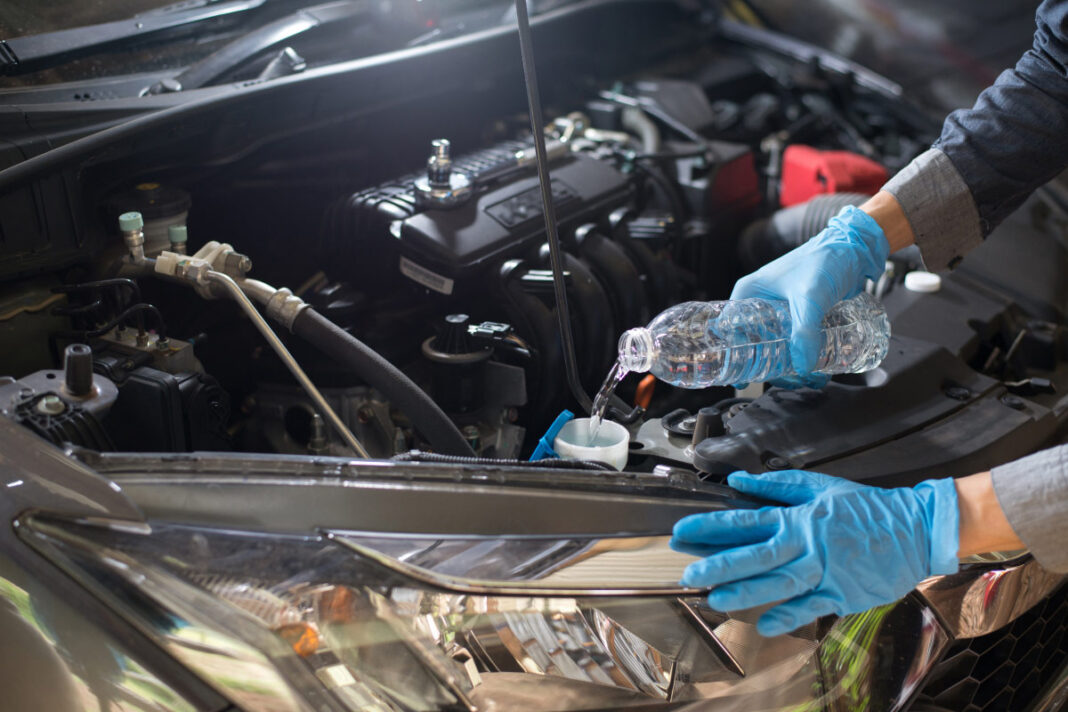Overheating is a significant problem that can cause irreversible damage to a car’s engine and other important parts if not addressed promptly. This is a common issue in the summer since the ambient temperature surrounding the engine makes it work harder, generating heat. Furthermore, this can pressure the vehicle’s cooling system to keep the engine running at safe temperature limits. When this system fails, the engine overheats, causing damage to various car components.
To avoid costly repairs in the long run, car owners must watch out for the common signs of overheating. By taking the necessary steps to prevent heat damage to the engine, they can ensure the safety of passengers as well as the longevity of their car.
1) Flush Out the Radiator
A good way to prepare the car for summer is to clean out the radiator. Flushing out the radiator helps ensure the cooling system contains fresh and clean coolant. This protects the engine from overheating when the temperatures rise during the warmer months.
2) Examine the Cooling System
When thinking about how to prevent a car from overheating in summer, inspecting the cooling system must be the first step. The cooling system is usually the car’s first line of defense that prevents its components under the hood from heating up. It helps the coolant or antifreeze flow through the car’s engine, helping to absorb excess heat. The radiator in the cooling system works as an exhaust that allows the heat to escape. When the cooling system works optimally, it ensures fuel efficiency, engine longevity, and better vehicle performance. To prepare the car cooling system for summer, a car owner must ensure that the cooling fans and radiator perform to their full capacity. Also, regularly check the coolant level and refill whenever it drops below the recommended level. Along with this, hire a professional to perform a cooling system fluid exchange during regularly scheduled vehicle maintenance.
3) Examine the Air Conditioning
For many car owners, summers usually mean cranking up the air conditioning higher during journeys. The air conditioning system must function optimally to maintain the comfort levels inside the car. If there are problems within the system, it can malfunction and cause the car’s engine to overheat. When this happens, the air conditioning does not get as cold as it used to be. This can be because of low levels of refrigerant. Alternatively, a leak can also cause the air conditioner to malfunction and overheat the car. Irrespective of the reason, in such situations, it can be helpful to have a professional check the system and do the necessary repair and maintenance work.
4) Inspect the Battery
A helpful tip for keeping your car cool in hot weather is to monitor the temperature levels of the battery. Car batteries usually get heated since they continuously charge and discharge and carry a high electrical load. The level of heat in the engine system increases with the summer heat. These high temperatures can be bad for car batteries. The high heat can speed up the chemical reaction in the battery, leading to overcharging and overheating. This can also lead to corrosion on the battery terminals. To prevent these issues, it is advised to keep the battery in good condition and get it tested if it is older than three years.
5) Check the Pressure of the Tires
Another useful summer car maintenance tip to avoid overheating is to monitor the tires regularly. Generally, the air inside a car’s tires can expand because of hot weather. This can lead to overinflation, which, in turn, causes quick and uneven wear of the tires. Also, there is an increased risk of a tire blowout. So, it is important to check the tire pressure frequently and ensure it is at the recommended level by the manufacturer. This information can be easily found in the car’s manual.
6) Safeguard the Interiors
When looking at ways to prevent overheating during hot months, never ignore the interior cabin, including the dashboard and the upholstery. All of these can easily absorb excess heat, causing the temperature inside the cabin to rise quickly. This will not only be harmful to the car but also hazardous to its occupants. Also, the UV rays from the sun can cause significant damage to interior components. For instance, the upholstery can begin to fade, and the leather can dry out. To avoid this, place sunshades over the windshield and windows. Also, park the car in shady spots whenever possible. This can help keep the temperature inside the car cooler and more comfortable.
7) Change Oil Regularly
Engine oil decreases friction and keeps the engine cool. So, when wondering how to protect the car engine from heat damage, monitor the oil level and change it as recommended by the manufacturer’s manual. Also, make sure to use oil with the right viscosity to maintain the optimal temperature and performance of the engine.
8) Maintain the Fluid Levels
Along with the oil and coolant, a car owner must also monitor the levels of other fluids to prevent overheating during the summer months. Fluids such as brake fluids, transmission fluid, and power steering fluid must be checked frequently. Whenever these fluids drop below the recommended levels, make sure to refill them as soon as possible. This ensures that the vehicle runs smoothly even in hot weather.


